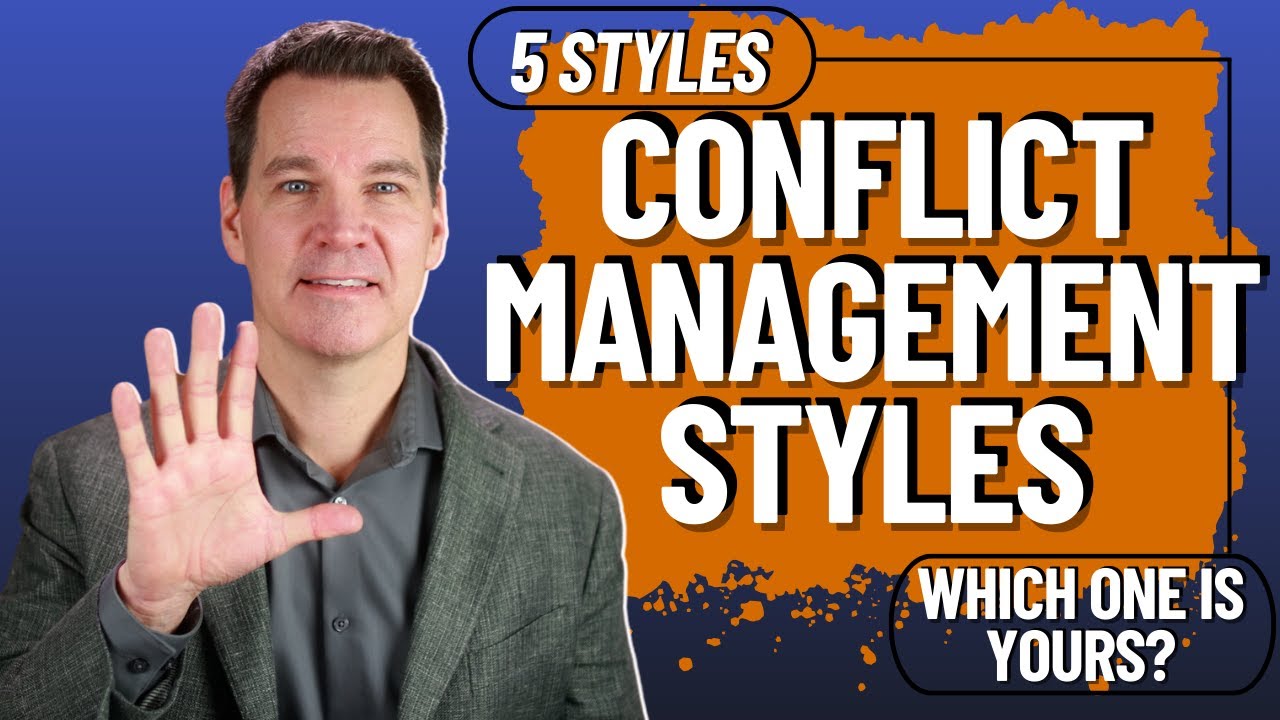Conflict Resolution Module 04
Summary
TLDRIn Module 4 on conflict styles, the presenter emphasizes that conflict styles are collections of behaviors rather than fixed personality traits. The session covers the Dual Concern Model and the Thomas-Kilmann Instrument, explaining various conflict styles such as competing, avoiding, accommodating, compromising, and collaborating. The presenter shares their personal conflict style assessment results, encouraging participants to reflect on their own styles and compare with peers. The module concludes with an invitation to take a quiz on conflict styles, aiming to enhance understanding and navigate conflicts more effectively in personal and professional settings.
Takeaways
- 😀 A conflict style is a collection of behaviors that reflects how you might want to act in a specific conflict, rather than defining who you are.
- 🤔 Distinguishing between personality and conflict styles is crucial; while personality traits may seem fixed, conflict styles can be adaptable.
- ⚖️ The Dual Concern Model highlights two main concerns in conflict: your needs and the needs of the other person.
- 🦁 The five identified conflict styles are Lion (Compete), Turtle (Avoid), Owl (Accommodate), Fox (Compromise), and Dove (Cooperate).
- 🔄 Understanding the axes of the Raheem and Thomas-Kilmann models helps clarify how concerns for self and others are represented differently.
- 📊 The Raheem Model places concern for others on the vertical axis, while the Thomas-Kilmann Model places it on the horizontal axis.
- 📝 Personal conflict styles can be measured; reflecting on your results can reveal preferences and tendencies in conflict situations.
- 🤝 The most effective conflict resolution often seeks win-win outcomes, where both parties' needs are addressed.
- 🔍 Self-awareness in conflict styles can uncover strengths and blind spots when dealing with disagreements.
- 💬 Engaging with peers about your conflict styles fosters deeper insights and better understanding of diverse approaches to conflict.
Q & A
What is a conflict style?
-A conflict style is a collection of behaviors that describe how a person might want to act in a specific conflict situation.
How does the speaker distinguish between conflict styles and personality traits?
-The speaker emphasizes that conflict styles are not fixed traits like personality (e.g., being an extrovert or introvert) but rather adaptable behaviors that can change based on the conflict context.
What are the two main concerns in the Dual Concern Model?
-The two main concerns in the Dual Concern Model are the concern for one's own needs and the concern for the needs of the other person involved in the conflict.
Can you list the five conflict styles mentioned in the Rahim model?
-The five conflict styles are: 1) Compete (Lion), 2) Avoid (Turtle), 3) Accommodate (Harmonizer), 4) Compromise, and 5) Collaborate (Cooperator).
What happens to conflict styles when a person is stressed?
-When stressed, individuals may revert to more extreme or less effective conflict styles, such as avoiding the issue, freezing, or dominating the conversation.
How do the Rahim and Thomas-Kilmann models differ?
-The Rahim model positions concern for others on the vertical axis, while the Thomas-Kilmann model places it on the horizontal axis. They also use different labels for similar concepts.
What is the primary style of the speaker as indicated in the transcript?
-The speaker's primary style is characterized as 82% compromiser and cooperator, indicating a tendency to seek win-win solutions in conflicts.
What is the purpose of taking the conflict style assessment mentioned in the video?
-The purpose of taking the assessment is to help individuals identify their own conflict styles, compare results with others, and gain insights into their strengths and potential blind spots in managing conflict.
What role does personal reflection play in understanding conflict styles?
-Personal reflection allows individuals to analyze their behaviors in conflicts, understand their preferences, and recognize how these may differ from those of their peers.
What is the significance of win-win negotiating as described in the video?
-Win-win negotiating is significant because it aims to maximize the needs of both parties involved in a conflict, fostering cooperation and mutual benefit.
Outlines

Cette section est réservée aux utilisateurs payants. Améliorez votre compte pour accéder à cette section.
Améliorer maintenantMindmap

Cette section est réservée aux utilisateurs payants. Améliorez votre compte pour accéder à cette section.
Améliorer maintenantKeywords

Cette section est réservée aux utilisateurs payants. Améliorez votre compte pour accéder à cette section.
Améliorer maintenantHighlights

Cette section est réservée aux utilisateurs payants. Améliorez votre compte pour accéder à cette section.
Améliorer maintenantTranscripts

Cette section est réservée aux utilisateurs payants. Améliorez votre compte pour accéder à cette section.
Améliorer maintenantVoir Plus de Vidéos Connexes

Conflict Management Styles

Apa Itu Kepribadian dan Bagaimana Kepribadian Terbentuk? - [Belajar Psikologi]

Even Healthy Couples Fight — the Difference Is How | Julie and John Gottman | TED

Ohio State Leadership Studies and the Leadership Behavior Description Questionnaire

Hennepin Technical College Intercultural Conflict Styles

MODULE 09: How to Resolve Conflict in the Workplace
5.0 / 5 (0 votes)
